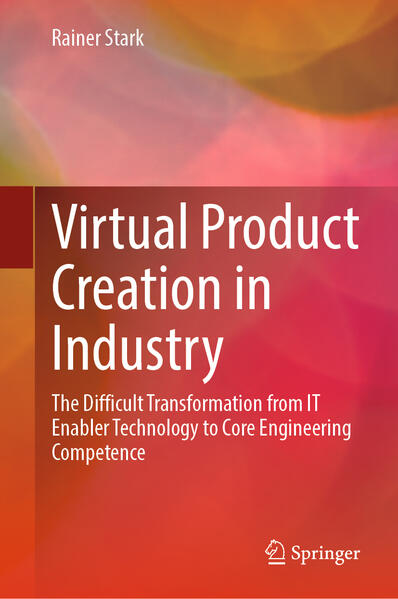
Zustellung: Mo, 23.06. - Do, 26.06.
Versand in 1-2 Wochen
VersandkostenfreiBestellen & in Filiale abholen:
Today, digital technologies represent an absolute must when it comes to creating new products and factories. However, day-to-day product development and manufacturing engineering operations have still only unlocked roughly fifty percent of the "digital potential". The question is why? This book provides compelling answers and remedies to that question. Its goal is to identify the main strengths and weaknesses of today's set-up for digital engineering working solutions, and to outline important trends and developments for the future.
The book concentrates on explaining the critical basics of the individual technologies, before going into deeper analysis of the virtual solution interdependencies and guidelines on how to best align them for productive deployment in industrial and collaborative networks. Moreover, it addresses the changes needed in both, technical and management skills, in order to avoid fundamental breakdowns in running information technologies for virtual product creation in the future.
Inhaltsverzeichnis
Motivation and approach. - The big picture - Information technology in enterprises. - Virtual Product Creation (VPC)- what is it? - The technology history of Virtual Product Creation. - The role of Virtual Product Creation for Engineering and PLM- evolving from IT. - The traditional approach of Virtual Product Creation in industry and its flaws. - The major technologies of Virtual Product Creation (CAID, CAD, CAM, CAE, PDM/BOM, DMU, VR, AR, Digital Factory). - The hidden demands of the engineering community. - Best practices of integrating Virtual Product Creation into mainstream engineering. - The challenge of modifying Management Leadership behavior towards Virtual Product Creation in enterprises. - The role and future of IT/PLM vendors. - Outlook to future Virtual Product Creation solutions.
Produktdetails
Erscheinungsdatum
25. Dezember 2021
Sprache
englisch
Auflage
1st edition 2022
Seitenanzahl
692
Autor/Autorin
Rainer Stark
Verlag/Hersteller
Produktart
gebunden
Abbildungen
XXXIII, 656 p. 325 illus., 312 illus. in color.
Gewicht
1191 g
Größe (L/B/H)
241/160/43 mm
ISBN
9783662642993
Entdecken Sie mehr
Bewertungen
0 Bewertungen
Es wurden noch keine Bewertungen abgegeben. Schreiben Sie die erste Bewertung zu "Virtual Product Creation in Industry" und helfen Sie damit anderen bei der Kaufentscheidung.










